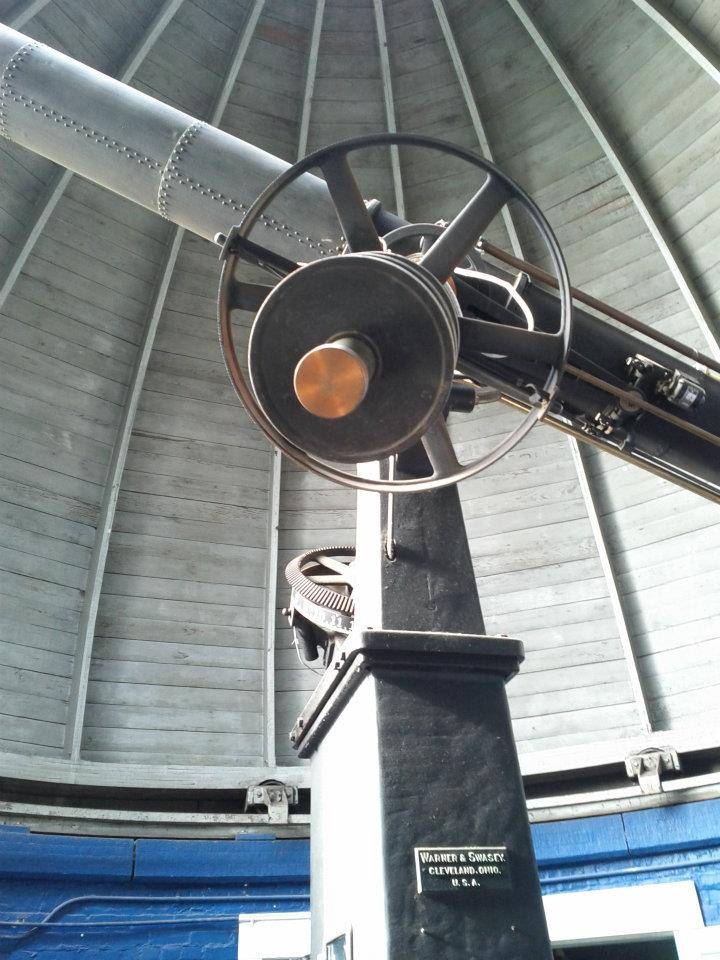There are few things more daunting than the concepts of time and space. I don’t care how well-versed you are in physics or astronomy. It’s tough wrapping your head around just how big the universe is or just how much has happened in a single span of time. Scary, right? Yet, also pretty fascinating. I had the unique opportunity to take a glimpse through both time and space at the University of Illinois Observatory during one of their monthly public open houses.
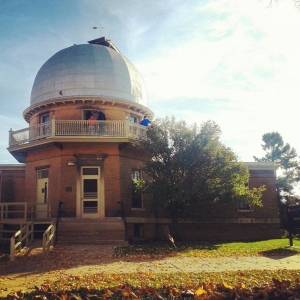 Situated at the heart of the university campus, just a stone’s throw from the main quad, the observatory is one of the area’s many hidden treasures. Its bright metallic dome and lightly colored brick exterior set it apart from the many other university halls. But, in terms of history, the building fits right in. The observatory was constructed in 1896, making it 119 years old at present date. It’s also listed on the National Register of Historic Places. Though the building had been refurbished just last year, I could definitely feel the age of the place as I stepped inside. The walls, the floor, the staircase that takes up most of the entry forum. They all looked worn and well used. A few telescopes of various sizes and shapes were on display, along with some classic photos of the observatory and the astronomy department it originally housed. I could easily envision students and faculty coming and going with their research, chatting over their new discoveries and comparing notes.
Situated at the heart of the university campus, just a stone’s throw from the main quad, the observatory is one of the area’s many hidden treasures. Its bright metallic dome and lightly colored brick exterior set it apart from the many other university halls. But, in terms of history, the building fits right in. The observatory was constructed in 1896, making it 119 years old at present date. It’s also listed on the National Register of Historic Places. Though the building had been refurbished just last year, I could definitely feel the age of the place as I stepped inside. The walls, the floor, the staircase that takes up most of the entry forum. They all looked worn and well used. A few telescopes of various sizes and shapes were on display, along with some classic photos of the observatory and the astronomy department it originally housed. I could easily envision students and faculty coming and going with their research, chatting over their new discoveries and comparing notes.
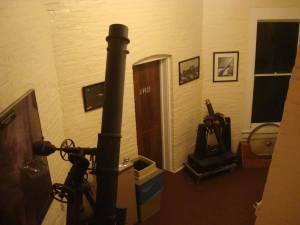
The observatory began the tradition of opening its doors to the public back in 1897, while they were observing a passing comet over Champaign. Since then, open houses have taken place on the first Friday of every month, provided that the sky is clear. Even after the department moved to a newer, larger building to accommodate their growing number of faculty members, the observatory continued to host these events under the coordination of the University of Illinois Astronomical Society (UIAS), a group of students and employees who love to share their passion for the skies with others. As someone who’s not exactly science-driven, I hadn’t heard about these open houses until a few months ago, when a creative writing professor of mine advertised it as an opportunity for inspiration and adventure.
Heading up the stairwell, I noticed the light from the forum below fading away. Only an eerie red light remained, guiding me to a closed wooden door at the top. While at the time I expected to see a serial killer jump out at me, I understood later that this is to limit the excess light that could mess with observations happening inside the dome. Red light is the easiest on the human eye when working in the dark, hence why photographers’ “dark rooms” are usually red toned.
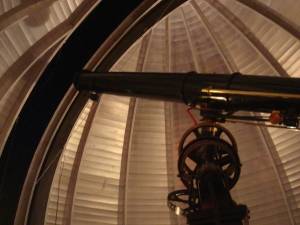
I opened the door and my eyes went wide. Before me sat a 12-foot-long telescope, aiming for a single open panel of the dome above. The thing takes up most of the room inside the dome, so we visitors had to scooch around its base delicately to get around. At the narrow end of the instrument, an astronomy student sat in a small chair on a big adjustable platform, trying to aim the lens at just the right angle. He was advised by the handful of professors. I guess their ultimate decision was to set move the open panel instead of the telescope, because a pair of them took hold of some ropes on the walls and pulled on them to rotate the dome. That’s right. The dome can be adjusted too! Watching the ceiling move above you is very disconcerting, as it looks like you’re the one that’s moving.
Satisfied with the telescope’s position, the hosts turned off the lights and filled the whole dome with that eerie red glow. It was announced that we’d be looking at Venus first. We were beckoned to climb up into the creaky wooden observing chair, one at a time, and look through the lens. As the platform and the chair were probably over a century old, I took an extra slow time climbing up the small steps and gently backing into the seat. Peering through the eye of the telescope, with the help of the twelve inch Brashear refractor inside, I could make out what looked like a yellow half-moon shape. The astronomy student explained that Venus has phases much like the moon. Huh, the more you know!
I stepped out onto the balcony that wrapped about the base of the dome. Only once in a blue moon had I ever seen the university’s campus from that height. It looked very peaceful at night, glowing in the full moon’s light and the vintage streetlamps. I almost felt sad to leave the view, but there was a better view waiting back inside the observatory.
The telescope had been re-positioned towards Jupiter. I once again tip-toed my way up to the chair and took a gander at out galaxy’s largest planet. It shone out very brightly against the black void. Focusing the lens a bit, I could even make out the different layers of color on the planet’s surface. For something so big, it sure looked tiny. I had an odd wave of existentialism at that moment, suddenly feeling very aware of just how tiny I was, compared to the rest of the universe. It was like entering the adult world after college, only multiplied by infinite.
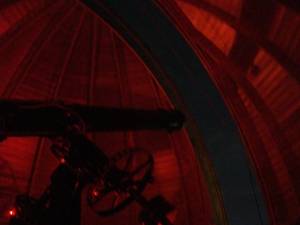
To help the flow of visitors in and out of the observatory, it was announced that second telescope had been set up on the lawn behind the building, right next to the Morrow Plots. Curious, I decided to check it out before leaving. The other telescope was a different shape than the refractor inside the dome, not to mention a fraction of the size. (A Dobsonian telescope, I discovered later.) Jupiter wasn’t quite as clear, but its moons stood out a lot better. Out of the estimated 57 moons hovering about Jupiter, I could only spot 3. They were actually very beautiful, shining like stars around an oval mass of red and orange. I took my time admiring this particular view; not because it would be going away any time soon, but because I didn’t know how much time will pass before I’d get the chance to see such a sight again.
If you’re free on the first Friday of the month, I highly recommend attending one of the open houses. They are free of charge and open to the general public. The observatory is located at 901 S. Mathews Avenue in Urbana. For more information on the observatory and future events, check out the official website here. To join the guest list, send an email to [email protected].
Photography credit to Mallory Conlon.








